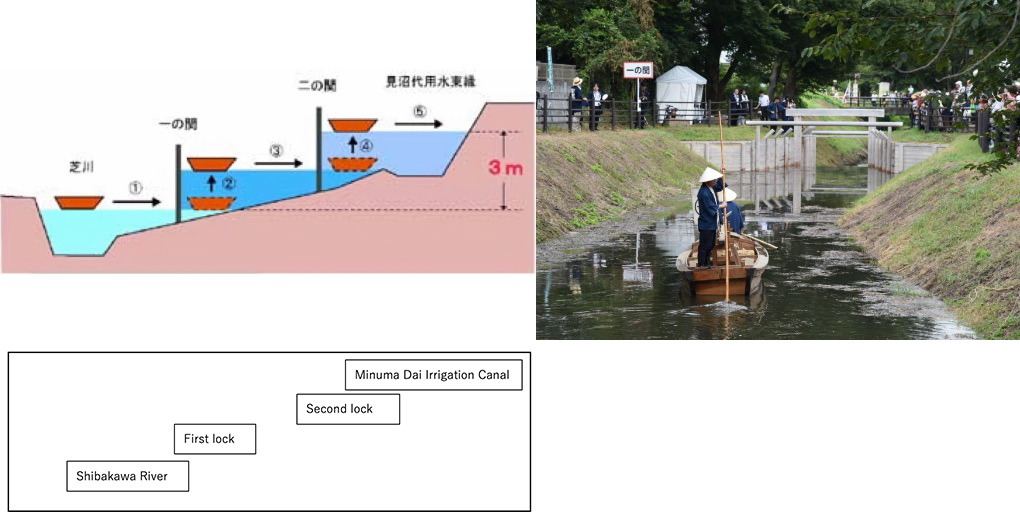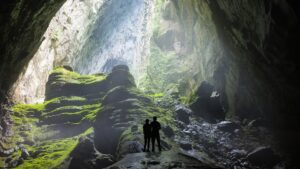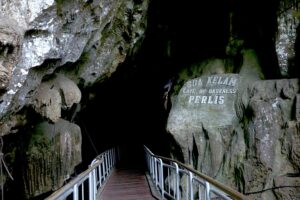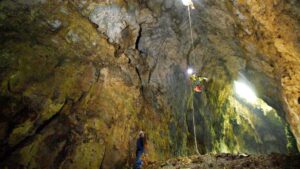Understanding Gua Jepang Rane: A Comprehensive Overview

Nestled within the lush landscapes of Indonesia, Gua Jepang Rane is a captivating natural wonder that attracts explorers, history enthusiasts, and nature lovers alike. Known for its rich historical background and stunning geological features, the cave offers a unique glimpse into the region’s cultural and natural heritage. As one of the significant caves in the area, Gua Jepang Rane holds both historical importance and ecological value, making it a noteworthy destination for visitors seeking an immersive experience. This article explores the various facets of Gua Jepang Rane, from its geographic location to the myths that surround it, providing a comprehensive overview of this intriguing site.
Introduction to Gua Jepang Rane and Its Significance
Gua Jepang Rane is a historic cave that bears witness to Indonesia’s complex past during the Japanese occupation in World War II. Its significance extends beyond its historical context, serving as a symbol of resilience and cultural identity for local communities. The cave is also renowned for its natural beauty, featuring stalactites, stalagmites, and unique rock formations that have formed over thousands of years. It functions as both a cultural heritage site and a natural sanctuary, offering insights into the region’s geological and historical evolution. Its preservation is vital for maintaining the historical narrative and promoting sustainable tourism.
The cave’s significance is further amplified by its role as an educational site, where visitors can learn about Indonesia’s wartime history and environmental conservation. Local guides often share stories of the cave’s past, including its use as a hiding place during wartime and its importance in local folklore. The site also fosters community pride, serving as a cultural landmark that connects the present with the past. Efforts to protect Gua Jepang Rane are integral to preserving its multifaceted significance for future generations.
Moreover, Gua Jepang Rane acts as a catalyst for regional tourism development, attracting both domestic and international visitors. Its historical and ecological importance contribute to local economies and encourage sustainable practices that balance tourism with conservation. The cave’s significance is thus multifaceted, encompassing historical remembrance, ecological preservation, and cultural identity, making it a treasured asset for the region.
In essence, Gua Jepang Rane encapsulates the intertwined nature of history and nature, offering a compelling narrative that educates and inspires. Its preservation ensures that future generations can appreciate the cultural resilience and natural beauty embedded within this remarkable site. As a symbol of Indonesia’s diverse heritage, Gua Jepang Rane remains a vital part of the region’s cultural landscape.
Geographic Location and Accessibility of Gua Jepang Rane
Gua Jepang Rane is situated in a remote yet accessible part of Indonesia, specifically within a region characterized by dense tropical forests and rolling hills. Its exact location is often accessed via a network of rural roads that lead visitors to the outskirts of the cave complex. The nearest town or village serves as a starting point for travelers, with local transportation options such as motorbikes, jeeps, or guided tours facilitating access. The surrounding landscape offers a scenic backdrop, with lush greenery and natural waterways enhancing the overall experience.
The cave’s geographic location makes it a somewhat challenging destination to reach, requiring visitors to undertake a short trek through forested trails or rugged paths. However, this remoteness adds to the cave’s allure, offering an authentic adventure away from crowded tourist spots. Some tour operators provide organized excursions that include transportation, guidance, and safety measures, making it easier for visitors to explore the site comfortably. Accessibility improvements are ongoing, with local authorities working to enhance infrastructure while preserving the natural environment.
The region’s climate influences the accessibility of Gua Jepang Rane, with the best visiting seasons typically during the dry months when trails are less muddy and safer to traverse. During the rainy season, access can become difficult due to slippery paths and potential flooding. Visitors are advised to plan their trips accordingly and to wear appropriate footwear and clothing. The cave’s location also means that visitors should prepare for humid conditions inside, with temperatures and moisture levels conducive to the growth of unique flora and fauna.
Despite its somewhat remote setting, Gua Jepang Rane remains a popular destination, thanks to its historical significance and natural beauty. Local communities often serve as guides, providing insights into the surrounding environment and ensuring safe passage for visitors. The geographic positioning of the cave not only preserves its pristine condition but also offers an immersive experience that connects visitors with the natural and cultural landscape of the region.
In summary, the geographic location of Gua Jepang Rane combines accessibility with a sense of adventure, making it an appealing site for those seeking both history and nature. Its remoteness preserves its authenticity, while ongoing efforts aim to improve accessibility without compromising its ecological integrity.
Historical Background and Cultural Heritage of the Cave
Gua Jepang Rane carries a profound historical legacy rooted in Indonesia’s tumultuous past during the Japanese occupation in World War II. The cave served as a hiding place and strategic refuge for local residents and resistance fighters during wartime conflicts. Its tunnels and chambers provided shelter from enemy patrols and bombardments, embodying the resilience and bravery of the local communities. Over the decades, stories of survival and resistance have been passed down, cementing the cave’s place in regional history.
Beyond its wartime role, Gua Jepang Rane has become an integral part of local cultural heritage. It is often associated with folklore, legends, and traditional rituals that seek to honor and remember the sacrifices made by ancestors. Some local communities conduct annual ceremonies or festivals at the site, emphasizing its spiritual significance. The cave also features historical artifacts and markings that serve as tangible links to the past, attracting historians and cultural enthusiasts alike.
The cultural heritage of Gua Jepang Rane extends to its architecture and natural formations, which have been shaped by human activity and geological processes over centuries. The interplay between natural and human history gives the cave a layered significance, symbolizing both the endurance of local culture and the natural environment. Preservation efforts often include documenting oral histories and archaeological findings to ensure that the cultural narratives remain alive for future generations.
Educational programs and guided tours frequently highlight the historical importance of the cave, fostering awareness among visitors about Indonesia’s wartime struggles and cultural identity. Local elders and historians play a vital role in sharing stories that deepen visitors’ understanding of the site’s significance. As a cultural heritage site, Gua Jepang Rane also contributes to regional pride and identity, serving as a reminder of resilience in the face of adversity.
Overall, the historical background of Gua Jepang Rane enriches its natural allure, transforming it into a living museum of Indonesia’s history. Its cultural heritage underscores the importance of preserving both tangible artifacts and intangible stories that define the community’s collective memory.
Geological Formation and Unique Features of Gua Jepang Rane
Gua Jepang Rane is a marvel of geological formation, boasting intricate features that tell the story of millions of years of natural processes. The cave was formed primarily through limestone karstification, where acidic water gradually dissolved the soluble rock, creating an extensive network of tunnels, chambers, and passageways. The result is a complex labyrinth of formations that exhibit remarkable stalactites hanging from ceilings and stalagmites rising from the floor, often meeting to form columns and pillars.
One of the unique features of Gua Jepang Rane is its variety of mineral deposits and rock formations, which display a range of textures and colors. Some chambers are decorated with delicate draperies and flowstones, while others feature rugged, jagged surfaces that highlight ongoing mineral deposition. The natural acoustics of the cave are also notable, with certain areas producing resonant echoes that enhance the mystical atmosphere of the site.
The geological history of the cave is evident in its layered formations, revealing clues about the region’s climatic and environmental changes over millennia. The presence of fossilized marine shells within the limestone indicates that the area was once submerged under a shallow sea. These geological features not only make Gua Jepang Rane a site of scientific interest but also contribute to its aesthetic appeal, drawing photographers and geologists alike.
The cave’s unique features are also shaped by natural phenomena such as underground streams, waterfalls, and mineral-rich deposits. These elements create dynamic environments within the cave, supporting specialized ecosystems and providing habitat for various flora and fauna. The interplay of water and rock continues to sculpt and redefine the landscape, making Gua Jepang Rane a living geological museum.
Conservation of these geological features is crucial, as they are susceptible to damage from human activity and environmental changes. Preservation efforts focus on minimizing physical disturbances, controlling visitor access to sensitive areas, and conducting scientific research to better understand the cave’s geological processes. The geological richness of Gua Jepang Rane offers invaluable insights into Earth’s natural history and ongoing geological phenomena.
In essence, the geological formation of Gua Jepang Rane exemplifies the beauty and complexity of natural sculpting processes, making it a significant site for both scientific study and aesthetic appreciation.
Flora and Fauna Found Within the Cave Environment
Despite its subterranean nature, Gua Jepang Rane hosts a diverse array of flora and fauna adapted to the dark, humid environment of the cave. Specialized organisms have evolved to thrive in low-light conditions, contributing to the cave’s ecological complexity. Bioluminescent fungi, mosses, and algae are often found growing near entrances and in moist crevices, creating a surreal, glowing effect that adds to the cave’s mystical ambiance.
The fauna within Gua Jepang Rane includes various species of bats, which are vital for maintaining the cave’s ecological balance. Bats roost in dark chambers and contribute to insect control as well as nutrient cycling through their guano deposits. Other cave-adapted creatures include blind fish, crustaceans, and insects that have evolved reduced or absent eyesight, relying instead on other senses to navigate their environment. These species are often endemic, found only within this specific ecosystem.
Microorganisms also play an essential role in the cave’s ecosystem, participating in nutrient recycling and mineral deposition processes. Some bacteria and fungi are capable of breaking down organic matter brought in by visitors or flowing water, maintaining the delicate balance of life within the cave. Researchers often study these microorganisms



